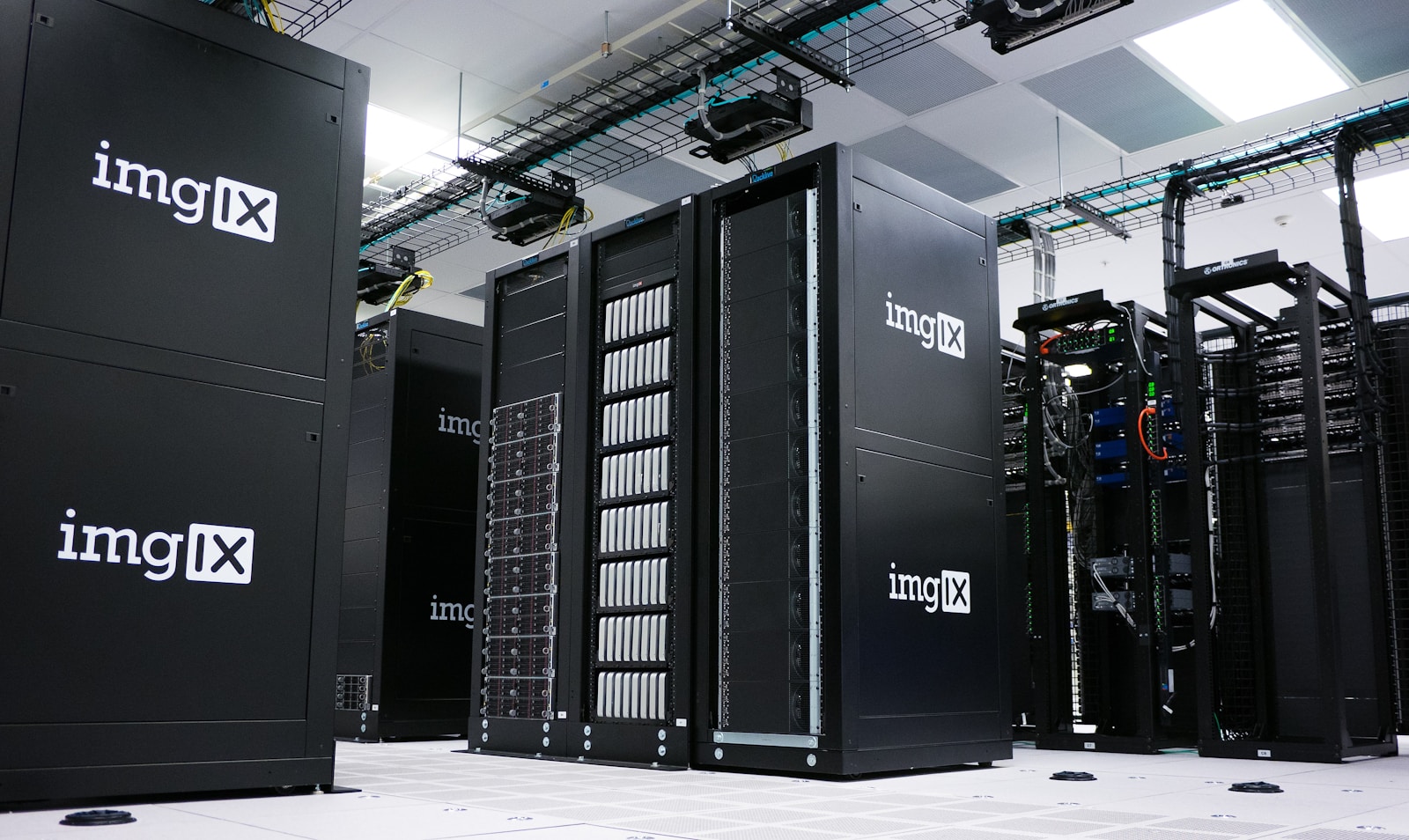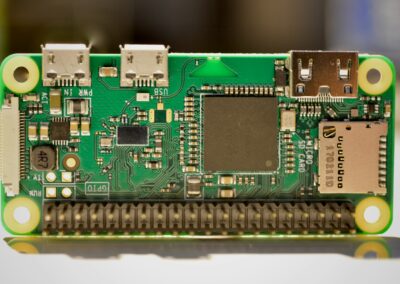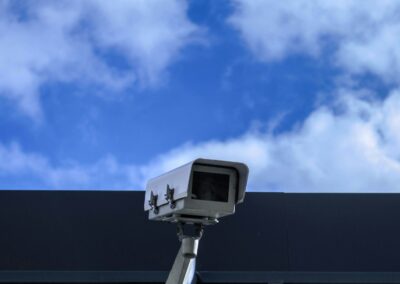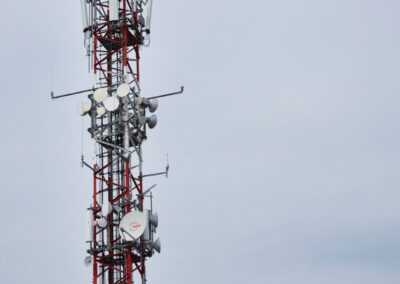Understanding Scalability in IoT Architectures
Foundations of a Scalable IoT Infrastructure
Scalability in IoT architectures is pivotal for ensuring that these systems remain relevant and functional over the long term. As cities like Riyadh and Dubai embrace smart city initiatives, the ability to scale IoT solutions effectively becomes a cornerstone of their technological strategies. In these rapidly evolving urban environments, the demand for IoT devices and applications is expected to grow exponentially. Therefore, building scalable IoT architectures is essential for accommodating this growth without compromising performance or efficiency.
A scalable IoT infrastructure is designed to handle increasing amounts of data, devices, and users seamlessly. This involves creating a flexible framework that can expand and adapt to new technological advancements and market demands. For instance, in a smart city like Dubai, where new sensors and data sources are continually being added, a scalable IoT system ensures that the city’s infrastructure can integrate these components without significant disruptions. This adaptability is crucial for maintaining the functionality and relevance of IoT systems as they evolve.
Moreover, scalability extends to the ability to enhance computational power and storage capacity as needed. Cloud computing plays a significant role in this aspect by providing scalable resources that can be adjusted based on demand. This flexibility allows cities to manage their IoT data more effectively, ensuring that real-time analytics and decision-making processes are not hindered by limitations in computing resources. For business executives and mid-level managers, understanding and implementing scalable IoT solutions is key to driving long-term success and innovation in their operations.
Economic and Operational Efficiency
Implementing scalability in IoT architectures also leads to significant economic and operational efficiencies. Traditional systems often require extensive and costly upgrades to handle increased loads or integrate new technologies. In contrast, scalable IoT systems are designed with modularity and flexibility, allowing for incremental upgrades and expansions. This approach reduces the need for large-scale overhauls, minimizing costs and downtime associated with system improvements.
For example, in Saudi Arabia, where industrial IoT applications are becoming more prevalent, scalable architectures enable businesses to expand their IoT networks gradually. This step-by-step scalability allows companies to align their technological investments with their growth trajectories, ensuring that they only invest in additional capacity when it is needed. This method not only optimizes capital expenditure but also ensures that IoT systems remain aligned with business objectives and market conditions.
Operationally, scalable IoT systems can better manage fluctuations in data volumes and processing demands. During peak times, such as major events or seasonal surges, a scalable infrastructure can dynamically allocate resources to handle the increased load. This capability is particularly important for smart city services that need to maintain high performance and reliability under varying conditions. By ensuring that IoT systems can scale efficiently, cities and businesses can maintain consistent service levels and user satisfaction, even as demands change.
Enabling Continuous Innovation
Scalability in IoT architectures is a driving force behind continuous innovation. In regions like the UAE and Saudi Arabia, where technological advancements are rapid and frequent, scalable IoT systems provide the flexibility needed to integrate new innovations without significant delays or disruptions. This capability allows businesses and cities to stay at the forefront of technological developments, leveraging the latest advancements to enhance their operations and services.
For instance, the integration of artificial intelligence (AI) and machine learning (ML) into IoT systems can significantly enhance data analytics and decision-making processes. Scalable architectures support the seamless incorporation of these advanced technologies, allowing businesses to analyze larger datasets and derive deeper insights. In smart cities, AI and ML can optimize traffic management, energy consumption, and public safety, leading to more efficient and sustainable urban environments.
Additionally, scalability enables the exploration of new business models and revenue streams. As IoT systems expand, they generate vast amounts of valuable data that can be monetized or used to create new services. For entrepreneurs and business leaders in Riyadh and Dubai, scalable IoT systems open up opportunities to innovate and differentiate themselves in the market. By adopting scalable solutions, they can experiment with new applications and services, driving growth and maintaining a competitive edge.
Practical Implementation of Scalable IoT Architectures
Modular Design for Scalability
One of the most effective strategies for achieving scalability in IoT architectures is through modular design. Modular systems are composed of interchangeable and upgradeable components, allowing for easy expansion and adaptation. This design approach is particularly beneficial in complex IoT deployments, where different modules can be added or upgraded independently, ensuring that the overall system can grow and evolve without major disruptions.
In smart city initiatives, modular design enables the integration of new sensors, devices, and applications as they become available. For example, in Dubai’s smart grid projects, modular IoT systems can incorporate new renewable energy sources or advanced metering technologies seamlessly. This flexibility ensures that the city’s infrastructure can adapt to changing energy needs and technological advancements, maintaining efficiency and sustainability over time.
Modular design also facilitates maintenance and troubleshooting. By isolating and addressing issues within specific modules, cities can minimize downtime and maintain high service levels. This approach is crucial for critical infrastructure systems, such as those managing water supply, transportation, and public safety. Ensuring that these systems are scalable and easily maintainable enhances their reliability and resilience, supporting long-term urban development goals.
Leveraging Cloud Computing
Cloud computing is a cornerstone of scalable IoT architectures, providing the necessary resources to handle varying workloads and data volumes. By leveraging cloud services, businesses and cities can scale their IoT infrastructure dynamically, adjusting computing power, storage, and network capacity as needed. This scalability is essential for managing the large and diverse datasets generated by IoT systems, enabling real-time analytics and responsive decision-making.
For example, in Riyadh’s healthcare sector, scalable IoT systems can manage data from numerous medical devices and patient monitoring systems. Cloud-based platforms provide the computational power needed to analyze this data in real-time, supporting timely medical interventions and improving patient outcomes. Additionally, cloud services offer robust security and compliance features, ensuring that sensitive healthcare data is protected and managed according to regulatory standards.
The flexibility of cloud computing also supports the development and deployment of new IoT applications. Businesses can use cloud platforms to test and scale innovative solutions quickly, reducing time-to-market and fostering a culture of continuous improvement. For executives and managers, leveraging cloud services is a strategic move that enhances the agility and scalability of their IoT initiatives, driving long-term success and technological leadership.
Ensuring Interoperability and Standardization
Interoperability and standardization are key factors in achieving scalability in IoT architectures. Ensuring that different IoT devices and systems can communicate and work together seamlessly is crucial for building scalable and flexible infrastructures. Standardization efforts, such as adopting common communication protocols and data formats, facilitate the integration and expansion of IoT systems, supporting long-term growth and innovation.
In smart cities like Dubai, interoperability allows for the efficient integration of diverse IoT applications, from traffic management to environmental monitoring. By adopting standardized protocols, cities can ensure that their IoT systems can interact with each other and with external systems, creating a cohesive and scalable urban infrastructure. This approach not only enhances operational efficiency but also enables the development of new services and applications that leverage data from multiple sources.
For businesses, standardization simplifies the integration of IoT solutions across different departments and locations. Ensuring that IoT systems are compatible and interoperable reduces complexity and enhances scalability, allowing businesses to expand their IoT initiatives smoothly. This capability is particularly important for multinational companies operating in regions like Saudi Arabia and the UAE, where diverse market conditions and regulatory requirements necessitate flexible and scalable solutions.
Conclusion
Scalability is a critical factor in building IoT architectures that remain relevant and functional in the long term. By focusing on modular design, leveraging cloud computing, and ensuring interoperability and standardization, businesses and cities can create scalable IoT systems that support continuous growth and innovation. For executives, mid-level managers, and entrepreneurs in Saudi Arabia and the UAE, embracing scalable IoT solutions is a strategic move that drives long-term success and technological leadership. As regions like Riyadh and Dubai continue to lead in smart city development, scalable IoT architectures will be key to building adaptable, resilient, and future-proof urban infrastructures.
—
#IoTScalability #LongTermIoTArchitecture #SmartCities #IoTSolutions #TechnologicalGrowth #IoTInfrastructure #FutureProofIoT































